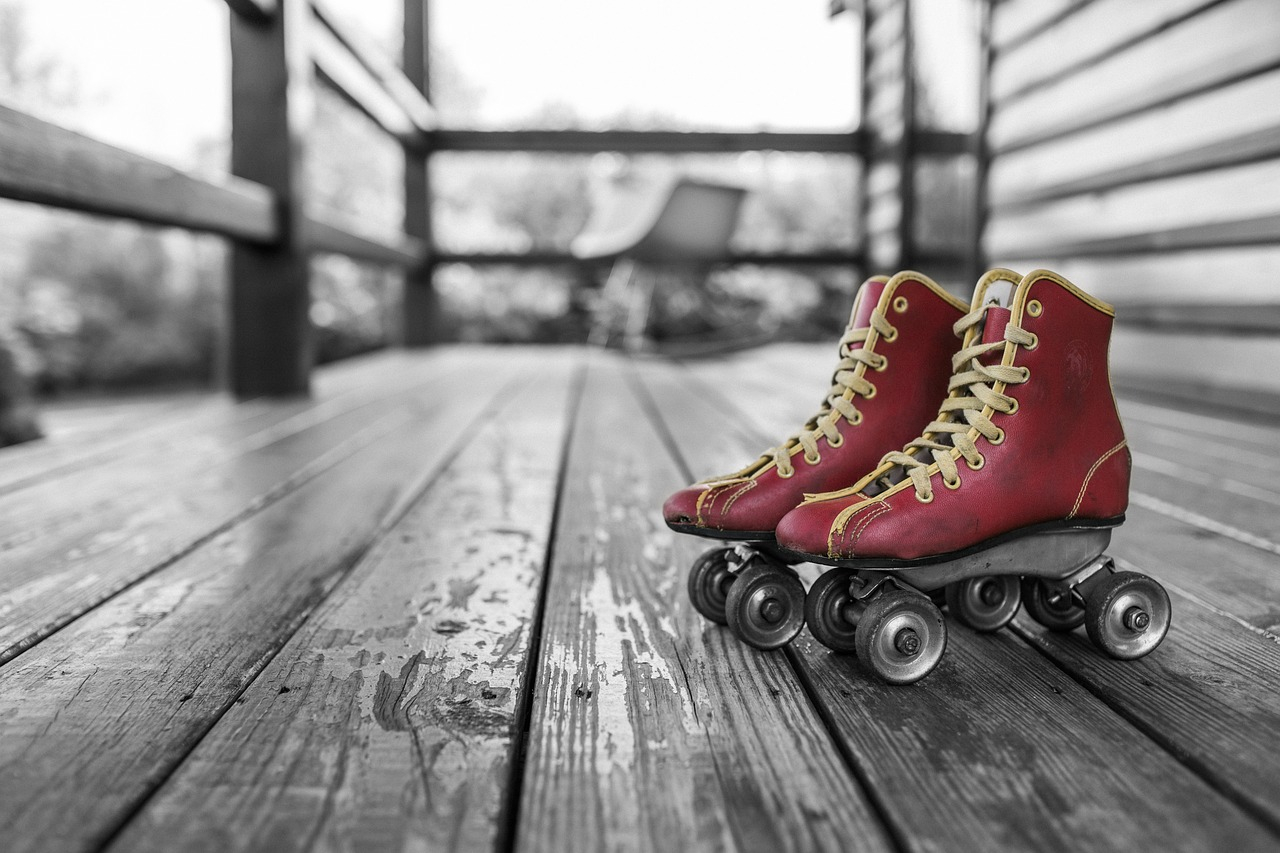How To Use The Squat Machine At The Gym
Are you ready to learn how to use the squat machine at the gym? This article will show you step-by-step how to set up and use this new machine. The squat machine is a fantastic way to strengthen your legs and build strong muscles. Whether you’re a beginner or an experienced gym-goer, this guide will help you get started and make the most out of your workout. So grab your gym bag, put on your workout clothes, and get ready to squat like a pro!

Setting Up the Squat Machine
Adjusting the Seat Position
Before you start using the squat machine, it’s important to make sure that the seat is adjusted properly. This will help you maintain the correct form and prevent any injuries. To adjust the seat position, first, locate the lever or knob that controls the seat height. You can usually find it on the side or back of the seat. Then, stand beside the machine and pull the lever or turn the knob to raise or lower the seat until it’s at a comfortable height for you. Make sure your feet can easily reach the footplate and your knees are at a 90-degree angle when seated.
Setting the Footplate Position
The next step is to set the footplate position. This is important because it will determine the angle at which your feet are placed during the exercise. Start by sitting on the machine and placing your feet on the footplate. Ideally, your feet should be shoulder-width apart. Adjust the footplate if necessary so that your feet are in a comfortable position. You can usually do this by pulling the lever or turning a knob located at the front of the footplate. Make sure your feet are flat on the footplate and not tilted to one side.
Selecting the Appropriate Weight
Now that the seat and footplate are properly adjusted, it’s time to select the appropriate weight for your squat exercise. Most squat machines have a weight stack or a weight plate that you can adjust. Start by selecting a lighter weight to begin with, especially if you’re new to using the machine. This will allow you to focus on your form and technique without straining your muscles. As you become more comfortable and stronger, you can gradually increase the weight. Remember, it’s better to start with lighter weights and progress slowly rather than using excessive weight and risking injury.
Adjusting the Safety Pins
Lastly, you need to adjust the safety pins on the squat machine. These pins will act as a safety mechanism to catch the weight if you lose control or can’t complete the exercise. Start by standing in front of the machine and checking the height of the safety pins. They should be set just below your squatting depth, slightly lower than the lowest point of your squat. To adjust the safety pins, find the lever or knob that controls their height. Pull the lever or turn the knob to raise or lower the safety pins until they are at the correct position. This will ensure that you can safely perform your squats without worrying about any accidents.
Getting into Proper Position
Standing in Front of the Squat Machine
To start your squat exercise, stand in front of the squat machine facing it. Make sure you have enough space around you and that there are no obstacles nearby. It’s also important to ensure that the floor is clean and free of any hazards. This will help prevent accidents and ensure a safe workout.
Positioning Your Feet and Shoulders
Before you grip the handles and start the exercise, you need to position your feet and shoulders correctly. Start by placing your feet shoulder-width apart on the footplate. Your toes should be pointed slightly outward. This will help you maintain balance and stability during the squat. Next, position your shoulders by standing tall and keeping your chest up. Avoid rounding your shoulders or leaning forward, as this can affect your form and put unnecessary strain on your back.
Gripping the Handles
Once your feet and shoulders are properly positioned, it’s time to grip the handles of the squat machine. The handles are usually located on the sides of the machine and provide support and stability while you perform the squat exercise. Grab the handles firmly with both hands, ensuring a comfortable and secure grip. This will help you maintain control throughout the exercise. Keep your arms relaxed and allow them to guide your movement but avoid pulling on the handles or using them to lift yourself up during the squat.

Performing the Squat Exercise
Initiating the Movement
Now that you’re in the proper position, you can begin the squat exercise. To initiate the movement, push through your heels and engage your leg muscles. Imagine pushing the floor away from you as you start to lower your body.
Lowering Your Body
As you initiate the movement, start lowering your body by bending your knees and hips. Keep your chest up and your back straight, maintaining a neutral spine position. Lower yourself until your thighs are parallel to the ground or slightly below. Avoid going too low or allowing your knees to go past your toes, as this can strain your knees and increase the risk of injury.
Maintaining Proper Form
Throughout the squat exercise, it’s important to maintain proper form. Keep your chest up and your back straight, avoiding any rounding or arching. Your knees should be in line with your toes and not caving inward. Remember to engage your core muscles to stabilize your body and keep your balance. This will help prevent any unnecessary strain on your back and promote an effective squat.
Pushing Through Your Heels
As you start to return to the starting position, focus on pushing through your heels. This will activate your glutes, hamstrings, and quadriceps, providing the necessary force to lift your body back up. Avoid shifting your weight to your toes, as this can strain your knees and lead to an imbalance in your movement.
Returning to the Starting Position
To complete the squat exercise, return to the starting position by extending your legs and straightening your knees and hips. Maintain control and avoid locking your knees at the top of the movement. Continue to engage your core muscles and keep your chest up as you rise back up. Once you reach the starting position, you can either pause for a moment before starting the next repetition or continue with a fluid motion.
Breathing Techniques
Inhaling and Exhaling during the Squat
Proper breathing techniques are important during the squat exercise as they help you maintain control and stability. Generally, you should exhale as you lower your body into the squat and inhale as you push back up to the starting position. This pattern of exhaling on exertion and inhaling on relaxation helps you engage your core muscles, stabilize your body, and provide the oxygen needed for the exercise.

Common Mistakes to Avoid
Incorrect Foot Placement
One common mistake to avoid is incorrect foot placement. Your feet should be shoulder-width apart and flat on the footplate, with your toes pointed slightly outward. Avoid placing your feet too close together or too far apart, as this can affect your balance and the effectiveness of the exercise.
Leaning Too Far Forward
Another mistake to avoid is leaning too far forward during the squat exercise. This can put excessive strain on your back and increase the risk of injury. Remember to keep your chest up and your back straight throughout the exercise. Avoid rounding your shoulders or leaning forward, as this can compromise your form and stability.
Using Excessive Weight
Using excessive weight is a common mistake that many people make when using the squat machine. Starting with lighter weights and gradually increasing the weight will help you maintain proper form and prevent injuries. Using too much weight can lead to poor technique and strain on your muscles and joints.
Not Utilizing Full Range of Motion
Not utilizing the full range of motion is another mistake to avoid. Lowering your body until your thighs are parallel to the ground or slightly below will help you engage your muscles fully and promote a more effective squat. Going too shallow or not reaching the proper depth can limit the benefits of the exercise.
Not Engaging Core Muscles
Engaging your core muscles is essential during the squat exercise. Neglecting to do so can result in poor stability and put strain on your lower back. Make sure to activate your core muscles throughout the exercise by drawing your navel toward your spine and maintaining a tight and stable core.
Tips for a Safe and Effective Workout
Start with Lighter Weights
As mentioned earlier, it’s important to start with lighter weights, especially if you’re new to using the squat machine. This will allow you to focus on your form and technique without straining your muscles. Gradually increase the weight as you become more comfortable and stronger.
Focus on Proper Form
Maintaining proper form should be a priority during your workout. This will ensure that you’re targeting the correct muscles and reducing the risk of injury. Take your time to learn and understand the correct form for the squat exercise and focus on maintaining it throughout your workout.
Gradually Increase the Weight
Once you’ve mastered the proper form, you can start gradually increasing the weight. Adding more weight will challenge your muscles and help you build strength. However, it’s important to progress slowly and listen to your body. Avoid making drastic increases in weight, as this can lead to injuries.
Use Spotter or Safety Bars for Heavy Loads
For heavier loads, it’s a good idea to have a spotter or use safety bars. This will provide an extra layer of safety and help you feel more confident during your workout. A spotter can provide assistance and help you if you struggle to complete a repetition. Safety bars can act as a safety net and catch the weight if you can’t complete the exercise.
Benefits of Using the Squat Machine
Targets Multiple Muscle Groups
Using the squat machine targets multiple muscle groups, including the quadriceps, hamstrings, glutes, and calves. It’s a compound exercise that works several muscles at once, making it an efficient workout choice.
Promotes Lower Body Strength
The squat machine is an excellent tool for promoting lower body strength. By regularly incorporating squats into your workout routine, you can build stronger muscles in your legs and improve your overall lower body strength.
Improves Balance and Stability
Squatting on a machine helps improve balance and stability. As you perform the exercise, you engage your core muscles and work on proprioception, which is your body’s ability to sense and control its position in space. This can lead to better balance and stability in everyday activities.
Enhances Functional Movement
Squats on the machine mimic everyday movements such as sitting down, standing up, and bending down. By strengthening the muscles used in these movements, you can enhance your overall functional movement and make everyday tasks easier.
Alternatives to the Squat Machine
Barbell Squats
Barbell squats are a popular alternative to the squat machine. This exercise involves using a barbell loaded with weights and performing squats with the bar resting on your upper back. Barbell squats require more stabilization and activate additional muscles, making them a challenging yet effective option.
Dumbbell Squats
Dumbbell squats are another alternative that can be done with just a pair of dumbbells. Hold the dumbbells at your sides or at shoulder height while performing the squat. Dumbbell squats provide more freedom of movement and can help improve balance and stability.
Resistance Band Squats
Resistance band squats are a great option for those who don’t have access to a squat machine or other equipment. Attach a resistance band around your thighs or hold it in your hands while performing squats. The resistance from the band adds an extra challenge to the exercise.
Bodyweight Squats
Bodyweight squats are a basic yet effective alternative that requires no equipment. Simply stand with your feet hip-width apart and perform squats using only your bodyweight. Bodyweight squats are a great option for beginners or for incorporating squats into your daily routine, even outside of the gym.
Squat Variations on the Machine
Narrow Stance Squats
To perform narrow stance squats on the squat machine, position your feet closer together, aiming for a stance that is narrower than shoulder-width apart. This variation targets the inner thigh muscles and can help improve leg strength and stability.
Wide Stance Squats
Wide stance squats on the squat machine involve placing your feet wider than shoulder-width apart. This variation primarily targets the outer thigh muscles and can help strengthen the hips and glutes.
Sumo Squats
Sumo squats on the squat machine mimic the stance of sumo wrestlers. Position your feet wider than shoulder-width apart, toes pointed outwards. This variation places more emphasis on the inner thigh muscles and can help improve hip mobility.
One-Legged Squats
One-legged squats, also known as pistol squats, can be performed on the squat machine by lifting one leg off the footplate and squatting down on the other leg. This variation challenges your balance, core strength, and leg muscles, providing a great workout for your entire lower body.
Conclusion
Using the squat machine at the gym can be a fantastic way to target multiple muscle groups and improve your lower body strength, balance, and stability. By following the steps to set up the machine correctly, getting into the proper position, and performing the squat exercise with proper form, you can maximize the benefits and minimize the risk of injury. Remember to start with lighter weights, focus on your breathing, and avoid common mistakes. And if you’re looking for alternatives or want to add variety to your workout, consider trying different types of squats and incorporating other exercises into your routine. With practice and consistency, the squat machine can become a valuable tool in your fitness journey.

